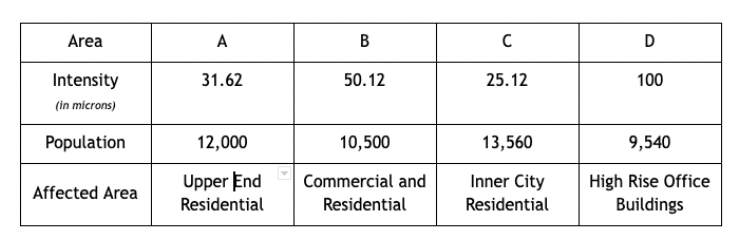TheWiseBoy
New member
- Joined
- Jul 24, 2022
- Messages
- 3
Ernie has been watching an earthquake building near Irvine, California. Earthquakes that measure more than 5 on the Richter Scale are considered to be destructive. With each point increase on the Richter Scale, the damage becomes ten times worse. Ernest has the following readings and populations of the four areas of the city, which are to be the hardest hit. M=log(i/s)+5 where i is the intensity, s is the standard earthquake and M is magnitude. In his model, the standard earthquake is 10 microns. He needs to find the magnitude of the earthquake at each location and recommend to the fire department which area they should prepare to visit first.

